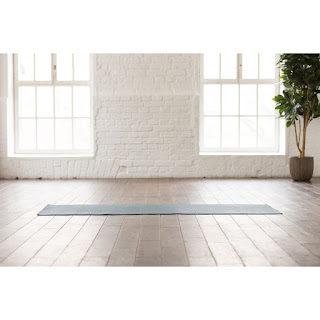Understanding Food Labels
Part of the Yoga Lifestyle is Eating Health. See our Blog on Yoga Food. Yoga Food is Mitahara meaning smooth, gentle, and lovely. It is light and easy to digest. It is like a medicine not only for the body but also for the mind.
You know the old maxim -- "You are what you eat." As much as possible, we want to eat healthy, clean food, that helps us balance our bodies and minds.
Reading and understanding food labels is essential to making the best possible decisions for your health and that of your family. The kind of information that is divulged in food labels can vary from product to product (when you factor in serving size, calories, nutrient information, etc.). Yes, it’s a lot to take in.
Let’s break it down.
It can be difficult to understand food labels - there’s tons of information there, from ingredients to serving sizes/portions and it can be hard to decipher.
Typically, food labels will give you the following info:
the name of the product
the brand name
what ingredients it contains (listed in order from largest to smallest by weight)
nutritional information (such as average amount of energy, fat, protein, sugars and salt)
use-by or best-before date
details of the manufacturer
how much it weighs
information for people with food allergies
a list of food additives
directions for use and storage
the country where the food was produced
There are also certain ingredients located on a nutrition label that you’ll want to consume less of, which includes saturated fat, sodium and monosodium glutamate, and added sugars and colors.
Consuming too much saturated fat and sodium comes with an increased risk of cardiovascular issues like high blood pressure.
In terms of nutrients you want more of, you’ll want to look for Dietary Fiber, Vitamin D, Calcium, Iron, and Potassium.
A diet that’s rich in dietary fiber can increase the frequency of bowel movements, lower blood glucose and cholesterol levels, and reduce calorie intake. Diets high in vitamin D, calcium, iron, and potassium can reduce the risk of developing problems like anemia and high blood pressure.
Overall, you’ll want to just avoid overly processed junk foods and really try to maintain balanced meals on a regular basis. By avoiding things like saturated fat, sodium, and added sugars, you’ll be able to make much better decisions in the future when it comes to food!
Remember, if you don’t know what the ingredient is - look it up! :)
There are also certain ingredients located on a nutrition label that you’ll want to consume less of, which includes saturated fat, sodium and monosodium glutamate, and added sugars and colors.
Consuming too much saturated fat and sodium comes with an increased risk of cardiovascular issues like high blood pressure.
In terms of nutrients you want more of, you’ll want to look for Dietary Fiber, Vitamin D, Calcium, Iron, and Potassium.
A diet that’s rich in dietary fiber can increase the frequency of bowel movements, lower blood glucose and cholesterol levels, and reduce calorie intake. Diets high in vitamin D, calcium, iron, and potassium can reduce the risk of developing problems like anemia and high blood pressure.
Overall, you’ll want to just avoid overly processed junk foods and really try to maintain balanced meals on a regular basis. By avoiding things like saturated fat, sodium, and added sugars, you’ll be able to make much better decisions in the future when it comes to food!
Remember, if you don’t know what the ingredient is - look it up! :)



















